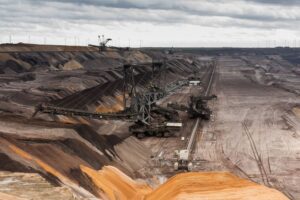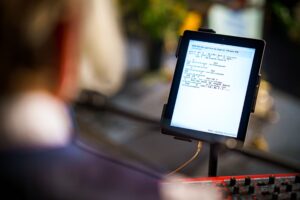Why Are Droneshield Shares Dropping and Should You Be Worried
![]() Charlie Youlden, November 13, 2025
Charlie Youlden, November 13, 2025
DroneShield Selloff Tests Nerves, But Fundamentals Tell a Different Story
DroneShield (ASX: DRO) experienced a sharp selloff this morning that had all the signs of a falling knife, with large trading volume moving out in the first twenty minutes. The catalyst was that CEO Oleg Vornik sold 49.5 million shares today, plus chairman Peter James ($12.4M) and director Jethro Marks ($4.9M) offloads, totaling ~$67M in insider dumping. In addition to the company’s need to withdraw its recent announcement due to wording that could have suggested the contracts were new when they were not. Outside of that clarification, the market reaction looks more like an emotional flush than a fundamental reset. The share price has now slipped below the 200-day moving average and sits more than 60 percent below its mid-October peak. That is a heavy pullback, but long-term investors must separate noise from substance. The real question is whether the underlying business has changed or whether today simply forced short-term holders out of the way.
The withdrawn announcement was not a good look for DroneShield’s internal team, and seeing the CEO sell shares is never a reassuring signal for any business. For DroneShield, this kind of selloff will naturally test retail investors from a psychological point of view, but it is still important to step back and assess the situation with a clear head. The real task is to decide whether the current share price reflects the company’s long term prospects or whether the market reaction has moved too far from the underlying fundamentals. When expectations and valuation become disconnected, it can create better entry points for investors who stay disciplined, understand the broader context and are willing to look past short-term volatility.
What are the Best Defence ASX Stocks to invest in right now?
Check our buy/sell tips
DroneShield accelerates growth with contracts and doubling of average deal size
Here is a quick recap of where DroneShield is positioned operationally. The recent announcement highlighted a series of smaller contracts which, while modest compared to the A$62 million European order earlier this year, still strengthen the company’s credibility. These orders continue to validate the performance of DroneShield’s counter drone systems in real defence environments. They show that the technology is not only being adopted but is proving effective, reliable, and trusted. Each repeat order reinforces customer confidence and supports the company’s pathway to long term scale.
For investors, the key takeaway is that DroneShield is showing meaningful momentum in both the size and frequency of its commercial contracts. In 2025, the company has secured 78 purchase orders with a median value of about A$400,000. This compares favourably to 66 orders last year with a median value of around A$200,000. The doubling of average deal size, combined with an 18 percent increase in total orders, points to accelerating commercial traction and deeper market penetration.
DroneShield targets fivefold production boost with new US and European facilities
DroneShield’s growth strategy is firmly focused on scaling production capacity and deepening its global footprint to meet surging demand from defence and security agencies. The company is in the midst of a major production expansion, targeting a fivefold increase in annual manufacturing capability from A$500 million to A$2.4 billion worth of systems by the end of 2026. This initiative includes the rollout of new assembly plants in the US and Europe, designed to localise production closer to key customers, reduce lead times, and better align with defence procurement cycles.
What the CEO Oleg Vornik had to say
CEO Oleg Vornik has highlighted that smaller, frequent contracts play a critical role in this growth phase. These orders help maintain steady operational momentum, smooth cash flow, and reinforce trust with major clients, laying the groundwork for larger, multi-year deals. Importantly, Vornik noted that DroneShield’s pipeline now includes multiple opportunities exceeding A$100 million, with one potential project valued at around A$800 million.
For investors, this combination of manufacturing expansion, geographic localisation, and a growing high-value pipeline reflects a company transitioning from a niche defence supplier into a globally scaled, recurring-revenue defence technology business.
The Investors Takeaway for DRO
A CEO selling 49.5 million shares will almost always spark panic selling because investors instinctively assume something might be wrong inside the business, even when there is no evidence of operational weakness. In reality, insider sales can be driven by many personal factors such as liquidity needs, tax planning, or portfolio diversification. The market rarely waits to understand the motive. It reacts first and rationalises later. What matters for long-term investors is that nothing has fundamentally changed in DroneShield’s business model. The company’s contracts, demand profile, and strategic momentum remain intact despite the short-term volatility. But it is important to look deeper and find out the reasons for the sell-off.
Blog Categories
Get Our Top 5 ASX Stocks for FY26
Recent Posts
Webjet Sinks 22 Percent After Softer H1 Results and Weak Domestic Demand
Webjet Falls 22 Percent After H1 Revenue Dips and Domestic Flight Demand Softens Webjet (ASX: WJL) opened down 22 percent…
Javelin Minerals Jumps 2,900 Percent on Capital Consolidation
A Sharper Share Register Sets Javelin Minerals Up for Its Next Corporate Stage Javelin Minerals (ASX: JAV) surged an extraordinary…
Straker (ASX:STG): After a difficult few years, could AI be a major growth catalyst?
Is Straker (ASX:STG) just one of those companies using the term ‘AI’ just to attract attention when nothing else is…



